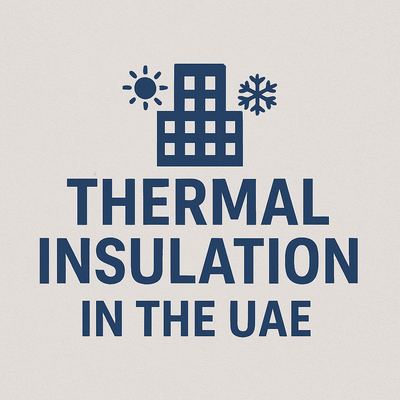
In the UAE’s extreme climate, where temperatures can soar well above 45°C in summer, thermal insulation isn’t just a building upgrade—it’s a necessity. Proper insulation from roof to floor helps reduce energy consumption, enhance comfort, and prolong the life of building materials. Whether you’re constructing a new property or upgrading an existing one, understanding the basics of thermal insulation is the key to making informed decisions.
The UAE experiences high solar radiation, intense summer heat, and significant cooling demands. Without effective insulation, buildings lose cool air and allow heat to penetrate easily, forcing air conditioning systems to work harder. This results in:
FSIME Construction specializes in designing insulation solutions that address these challenges, ensuring both comfort and efficiency for residential, commercial, and industrial buildings.
Benefit in the UAE: Roof insulation can reduce cooling costs by up to 30%.
Walls absorb and transfer heat, especially in concrete and block structures common in the UAE. Effective wall insulation methods include:
Benefit in the UAE: Keeps interiors cool without overloading air conditioning.
While often overlooked, floor insulation is essential for ground-floor spaces and buildings with underground parking or basements. Common options:
Benefit in the UAE: Helps maintain even indoor temperatures and reduces HVAC workload.
Windows and doors can be major weak points for heat transfer. Solutions include:
Benefit in the UAE: Blocks harmful UV rays and minimizes heat gain without sacrificing natural light.
At FSIME Construction, we provide end-to-end insulation services—from material selection to professional installation—tailored to UAE climate conditions. Our solutions comply with local building codes and sustainability standards, ensuring maximum return on investment for our clients.
Whether it’s a villa, high-rise, warehouse, or commercial complex, our team ensures your building stays cool, energy-efficient, and future-ready.
Conclusion
Thermal insulation is more than just a building feature—it’s a long-term investment in comfort, efficiency, and sustainability. By insulating from roof to floor, you can significantly lower energy costs, reduce environmental impact, and create a more comfortable indoor environment.
 Call Back
Call Back